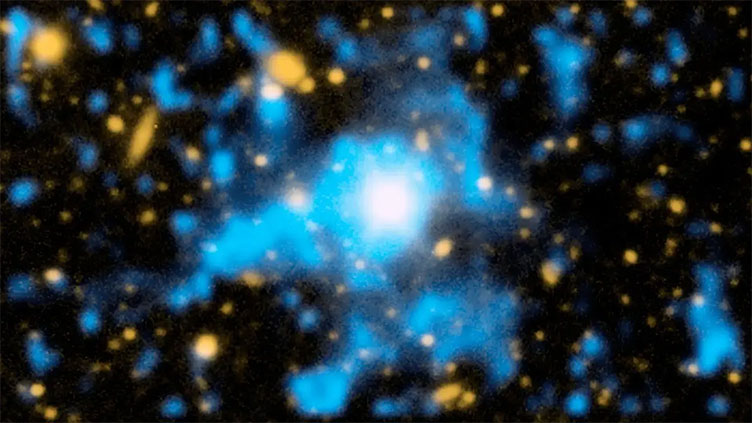Mysterious ancient radio bursts may hold key to mapping the universe

Technology
The findings offer a glimpse of what exists in the space between galaxies throughout the universe (
Web Desk) - Baffling bursts of radio waves that originated billions of light-years away may be able to reveal what the universe really looks like, according to a new paper published in the journal Science.
The bursts — which last just a small fraction of a second — are each so powerful that, if converted to electricity, they could "make as much popcorn as I think two Suns worth, or something like that," said J. Xavier Prochaska, a professor of astronomy and astrophysics at University of California Santa Cruz.
In the new study, Prochaska and his team try to trace the bursts' path through space. While they did not conclusively find where the radio bursts actually originated, they can see where they have been.
One of the bursts was detected by the Australian Square Kilometre Array Pathfinder — Prochaska and his colleagues concluded the burst had to have traveled through a cloud of cosmic plasma, or highly ionized gas.
Untangling the Web: The finding offers a glimpse at the kind of matter out in the vast spaces between galaxies. Because only a tiny portion of the universe’s matter exists in these easily seen galaxies, finding these hard-to-spot clouds of particles helps to map out the stuff that’s out there.
"Galaxies are at the intersections of threads in the cosmic web, kind of where the spider would hang out," explained Prochaska.
"But most of the matter in universe is not in the galaxies and the stars — most of the matter in our universe is in the web.
And so to the extent that we wish to understand the evolution of our universe, the origin of the universe, we need to map out that cosmic web and make sense of it."
It’s Now or Never to Fund US Competitiveness in Science and Tech
Prochaska said that by interpreting the signals in the radio bursts, it’s possible to determine how many electrons they encountered on their way to Earth.
"This thing travels to us from across maybe half the universe and encoded in that signal, there’s not only radio waves, but also 'hey, here's how much plasma I traveled through,'" explained Prochaska.
The findings could even hint at the location of one of the universe’s least understood and most abundant components: dark matter. This material is believed to account for over a quarter of the mass in the universe, but it can’t be seen or detected using today's instruments.
"I’m anticipating now probing most of the universe for these events," said Prochaska. "And in the next few years, we will understand and know well this pattern of the cosmic web, And then we'll get more precise, we will start also mapping out how much invisible matter is around galaxies and clusters of galaxies.”"



